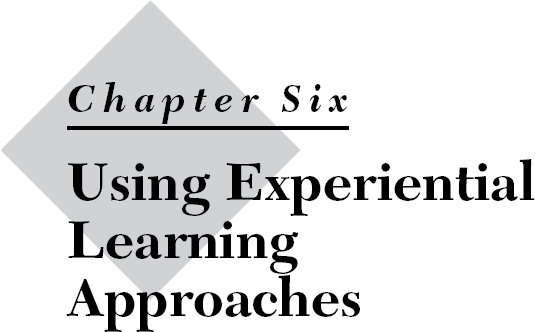
Active training promotes learning by doing. As indicated, even a presentation has to be designed to involve the participation of the learner and, at times, it can be replaced by one of several methods that facilitate more direct acquisition of information. Still other methods place an even greater premium on active, participatory learning.
Experiential learning not only enhances the understanding of concepts but is also the gateway to skill development. Whenever you want participants to develop skills (e.g., creating spreadsheets, operating equipment, interviewing job candidates), it's imperative to go beyond showing them how to do it. They must do it themselves, not just once but often, at first with your guidance and then on their own.
Experiential learning approaches are particularly suited for affective and behavioral training goals. They help participants become aware of their feelings and reactions to certain issues and new ideas. In addition, they allow participants to practice and refine new skills and procedures. In this chapter, we will examine and illustrate six major experiential learning approaches:
- Role playing
- Games and simulations
- Observation
- Mental imagery
- Writing tasks
- Action learning
ROLE PLAYING
Role playing is a staple in any active trainer's repertoire. It is the best-known way to help participants both experience certain feelings and practice certain skills. ...
Get Active Training: A Handbook of Techniques, Designs, Case Examples, and Tips, 4th Edition now with the O’Reilly learning platform.
O’Reilly members experience books, live events, courses curated by job role, and more from O’Reilly and nearly 200 top publishers.

